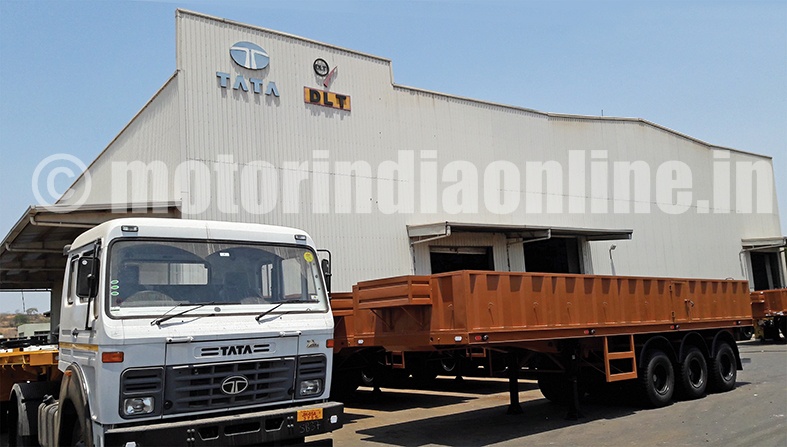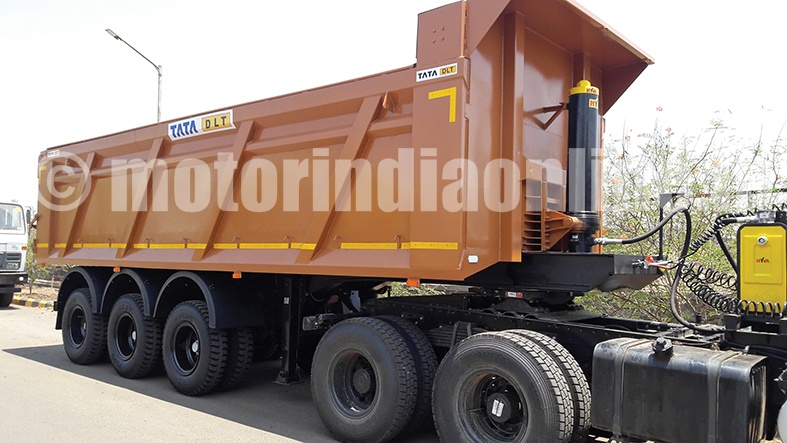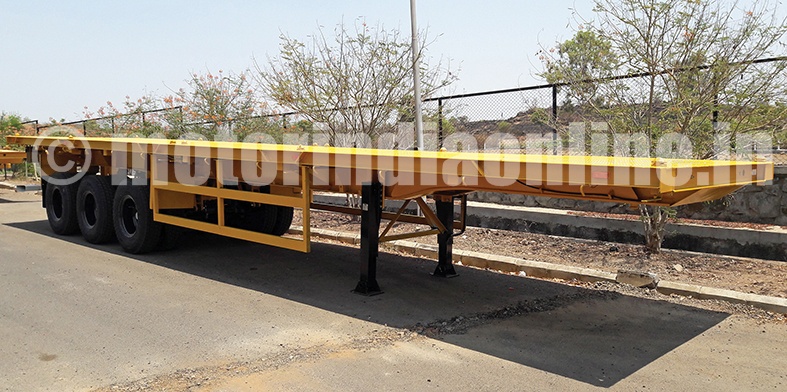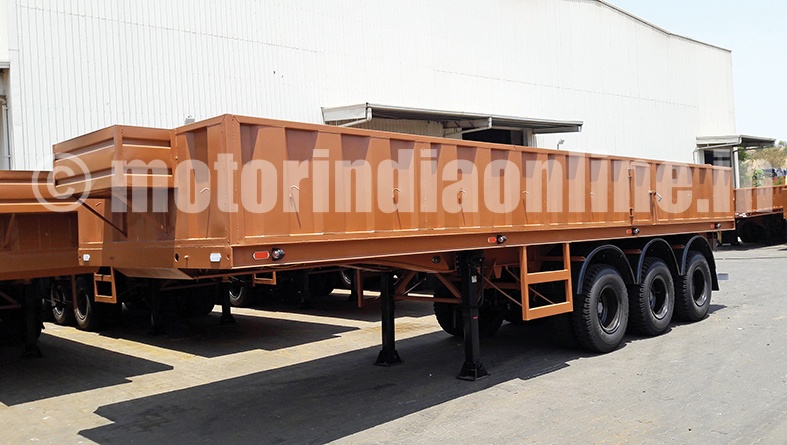Aggressive expansion fuelling growth
It has been quite an eventful FY 2015-16 for India’s leading organized trailer manufacturer, Tata International DLT Pvt. Ltd., popularly known as Tata DLT.
Mr. Rajeev Batra, Chief Operating Office, Tata International DLT Pvt. Ltd., speaking exclusively to MOTORINDIA, observed: “In FY15-16 we sold 2,662 units of trailers, which is a jump of around 30 per cent compared to the previous financial year. Owing to a lot of activity in different trailer models like side-wall, flat bed, car and truck chassis carrier and our focused approach in expanding our reach and awareness in the MGR region (Maharashtra, Gujarat and Rajasthan), we are targeting 3,600 in FY16-17.”
It has to be noted that till 2014-15 the company did not enter the open market with full strength. It was more comfortable selling fully-built vehicles (FBVs) to Tata Motors customers. “In FY14-15 we worked on product and service first by setting up marketing channels pan-India. Being the biggest trailer market, MGR attracts 55-60 per cent of TIV trailer demand and later moved on to Eastern and Southern regions of India. Once we reached the markets, we got familiar with different requirements from these areas”, disclosed Mr. Batra.
Calculated expansion
Once Tata DLT decided to spread its wings, it realized that Rajasthan could emerge as the biggest trailer market in India given the dominance of cement, marble and granite companies. “Since our team interacted with a lot of companies and dealers in Rajasthan, we figured out that the trailer industry in Rajasthan will grow exponentially in a few months due to demands from these industries and good connectivity of road to other states. Our research helped us judge the requirement as well a tentative demand for units per month”, he explained.
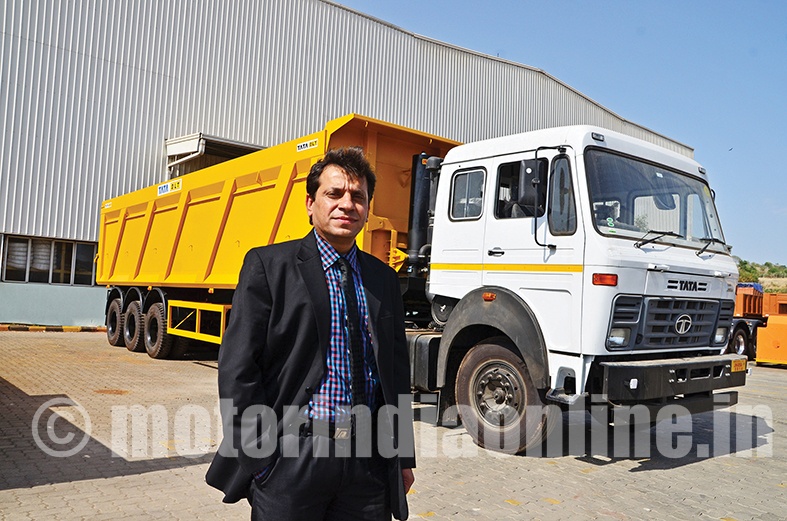
Even in side wall trailer, Rajasthan required two types – one that for the standard trailer which was 9 meter, 4 feet side wall along with heavy load carrying capacity (named Mega loader) – and the other was trailers measuring 32-34-36-40 feet. It had 3 variations: 4 feet side wall, 4.5 feet and 5 feet side wall. “The side wall is a plain sheet model and not corrugated sheet with 2 mm thickness but in our design we used a plain sheet like a tip trailer design with 3 mm thickness and with a heavy load axle and suspension. It weighs lighter but can carry heavy load. The Mega loader has become very popular in the 49 tonne Prime movers of Tata and Leyland,” beamed the COO.
To address the capacity Tata DLT started a plant in Ajmer in September 2015, he said: “It is a 100 per cent replica of our Pune parent plant as far as the processes are concerned and can produce 120 trailers per month. It is fully operational and has reached 80 per cent of capacity utilization, and as the market grows we would ramp up our production capacity. Currently we have sufficient orders that we can deliver in the next two months.”
The calculated expansion in Rajasthan (up north) has begun to pay rich dividends. The last quarter of FY15-16 saw the Tractor TIV of the northern region escalate to 1,200 trailer units per month and Rajasthan brings up almost 70 per cent of the demand and the rest 30 per cent comes from Haryana and Delhi.
After successful results in the North, Tata DLT focused on the Eastern belt of Jamshedpur, Assam and the western region, particularly Maharashtra and Gujarat, to cater to the emerging demand for flatbed trailers. “We found a lot of container movement because of the ports in Kolkata and Haldia, and even steel and coil companies required flatbed trailers. Since we were using ST 52 steel, which is a high tensile material along with rolled beam with H section our trailer is the lightest in weight and carries maximum weight. The customer gets more payload as the laden weight is less even on a 49 tonner and a 40 tonner,” he said.
Tata DLT started the plant first in 2011 at Pune, garnering support from Tata Motors. It has a capacity of around 250 to 270 trailers per month. “Maharashtra is second after Rajasthan in terms of trailer requirement. In Maharashtra, which recorded a TIV of around 500 trailers per month in FY16, the highest demand is from Mumbai followed by the Vidharbha region towards Nagpur-Aurangabad belt”, he stated.
Creating awareness
Despite penetrating with quality trailers, Tata DLT has to battle out with a lot of unorganized players. Transporters are drawn towards the unorganized trailer manufacturers constituting 60 per cent of the market. Even today many transporters are not aware of how in the long run Tata DLT trailers can surpass the unorganized trailers.
Mr. Batra claimed: “Initially our trailer is expensive by a few thousand rupees, but the operational cost of our trailer is much less than that of the unorganized market.”
He cited five important factors that enable better operational cost for transporters and distinguish Tata DLT from unorganized players. The first factor is 7-8 per cent longer tyre life (which is a major consumable for any transporter) due to superior braking system, better alignment between the axle and the king-pin and world class process (in the box) adherence followed. The few thousand extra that the customer is paying is saved in the first tyre saving itself. Considering a trailer life to be 7-8 years, a transporter can save a few thousand rupees every year on tyres.
Cent per cent use of original WABCO braking kit ensures safety. He revealed: “We also provide LQRV valve which help the transporter/driver adjust the braking pressure when they are coming empty. Unorganised player only use some component like the relay valve from WABCO and claim to be using the entire braking system.”
The third important factor is the use of high-tensile steel that guarantees longevity and higher payload. The fourth important factor that gives Tata DLT an edge is its pan-India service network that ensures that in case of a breakdown a trailer is up within 24 hrs.
“The biggest fear for any transporter is breakdown of the trailer that increases idle time of the vehicle over 2-3 days. Due to current 15 service stations spread across key regions in the North, East, West and even South and assistance from braking, axle and suspension partners like WABCO and York, we guarantee quick service. Last but not the least, the resale value of Tata DLT trailers after 7-8 years is much higher than that of unorganized players,” he explained.
Mature process
Tata DLT has a stringent process in place to manufacture world class trailers. Mr. Batra said: “We certify performance of the trailer while manufacturing in terms of braking efficiency, welding quality, on the defined stages. Before delivery we have a pre-delivery inspection not only on the sample but on 100 per cent orders. We follow the best process of the industry like fabrication that checks for welding failure, rusting on the body and efficiency of axle and suspension.”
Tata DLT invests in 100 per cent certified welders, and certification is renewed every year and checked by a third party agency. For painting and avoiding rust, the company follows the process of shot blasting.
He further said: “It is an expensive process, before going for the primer paint. The complete trailer is inside the cabin for shot blasting to remove the first layer of bad steel. Then in next 2 hours it goes into paint shop, drown draft and side draft which is the latest technology, then we put the primer, post the primer is applied it goes to the drying zone and after that it is applied with another layer of external paint. This paint has more than 500 hours of salt spray life. The body of the trailer remains as it is for long time”.
Even before actual manufacturing, the team has its task to certify the design. A good team of 10 designers fully equipped with the latest software like Catia, Pro E and FE analysis designs according to specifications. “We have also hired an outside agency which an conducts the testing again. They do the validation for each and every new design. They give feedback on modification, where more strength is required. After couple of tests, we launch the product for field trials, and that may go up to 4-5 months or (35-40000 km). After successful trial we launch it and the new design and technology is patented”.
He further disclosed: “Currently Tata DLT operates within three Lines of Business (LOB). LOB 1 is dedicated to Tata Motors FBV, LOB 2 is for new products or special trailers, and LOB 3 is for trailer that we sell directly to the market, not OEMs but customers. We will expand LOB 2 in FY16-17 as we focus on special trailers and the new line should be up by the end of August. Further in FY17-18 we wish to explore newer segments like bulkers, reefers and tankers and look for technical tie-ups if required.”
“Tata DLT has also applied for ARAI certification. Once we ramp up we also are pitching in for the TS certification to further strengthen our credibility and market proposition,” he concluded.
